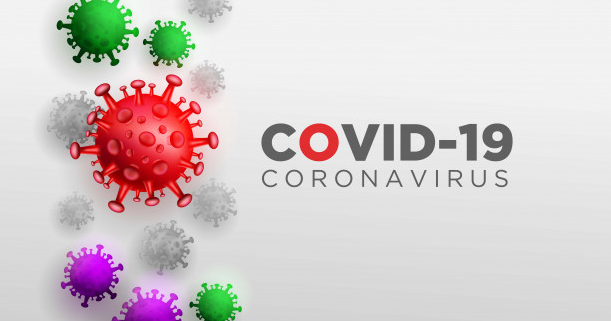How Does the AstraZeneca COVID-19 Vaccine Compare to Pfizer’s and Moderna’s?
It’s cheaper, easier to distribute, and relies on very different tech than its competitors.
- AstraZeneca’s COVID-19 vaccine has been approved for emergency use in the United Kingdom, India, and Mexico.
- Unlike its competitors, AstraZeneca’s vaccine is a modified version of a common cold virus that spreads among chimpanzees.
- This is the first vaccine of its kind to be approved for human use, but other companies are developing similar tech to fight COVID-19.
The UK became the first country to approve AstraZeneca’s COVID-19 vaccine for emergency use on Dec. 30, just weeks after Pfizer’s and Moderna’s vaccine candidates received a green light from the Food and Drug Administration in the United States. The approval is promising sign in the global immunization rollout—especially because this option, developed by Oxford University and biopharmaceutical company AstraZeneca, could be key to reaching people in rural and underfunded areas.
Unlike its competitors, the AstraZeneca COVID-19 vaccine can be stored at higher temperatures, costs less per dose, and uses different technology to immunize people. Although the vaccine hasn’t been approved for use in the U.S. yet, it could reach stateside in February at the earliest.
Here’s what we know about the vaccine so far, and how it stacks up against Pfizer’s and Moderna’s.
How does the AstraZeneca COVID-19 vaccine work?
AstraZeneca’s vaccine uses adenovirus-vectored technology. This means: It’s a harmless, modified version of a common cold virus that usually only spreads among chimpanzees. This altered virus can’t make you sick, but it carries a gene from the novel coronavirus’ spike protein, the portion of the virus that triggers an immune response. This allows the immune system to manufacture antibodies that work against COVID-19, teaching your body how to respond should you become infected.
The Known COVID-19 Vaccine Side Effects (So Far)
In other words, AstraZeneca’s vaccine mimics a COVID-19 infection without its life-threatening side effects, per a release from the company. The reason researchers chose a chimpanzee adenovirus is simple: The modified virus needs to be new to the people being vaccinated—otherwise, the body won’t create those all-important antibodies. Anyone could already have antibodies for a cold spread among humans, but far fewer people have been exposed to a cold spread among chimps.
The Pfizer-BioNTech and Moderna vaccines, meanwhile, rely on mRNA technology, which essentially introduces a piece of genetic code that tricks the body into producing COVID-19 antibodies, no virus required. All three vaccines require two shots spaced about 3-4 weeks apart.
Although no adenovirus-vectored vaccine has been approved for human use before, companies like Johnson & Johnson, CanSino, and NantKwest are all working on their own versions.
How does the AstraZeneca vaccine compare to the Moderna and Pfizer vaccines?
AstraZeneca’s vaccine is the easiest to transport so far—it can be stored for up to six months between 2.2 and 7.7°C, normal refrigerator temperatures.
The Moderna and Pfizer options, meanwhile, must be stored at subzero temperatures until they’re ready to be used, at -20°C and -70°C, respectively. (mRNA technology is relatively fragile compared to adenovirus-vectored tech, meaning it must be kept at much lower temperatures to remain effective and stable.)
AstraZeneca’s higher storage temperature could make distribution much easier. A clinic, a nursing home, or even [regional] health departments may not have freezers that can hold things at -70°C and being able to use a typical fridge allows time for distribution, allows the vaccine time to get to more rural areas, [and allows vaccines] to be kept at a clinic for a longer period of time.”
Cost
The new vaccine also beats its competitors on price: AstraZeneca’s vaccine costs providers about $4USD per dose, while Pfizer’s costs $20USD and Moderna’s costs $33USD. These prices will most likely fluctuate as time goes on and the vaccines evolve.
Efficacy
The two mRNA vaccines have a slight edge in efficacy; Both Pfizer and Moderna report being about 95% effective against COVID-19 after the second shot in clinical trials, while AstraZeneca has reported an average efficacy of 70%, and up to 90% if the dosing is adjusted. (For comparison, the annual flu shot is usually between 40 and 60% effective, per the CDC.) We however, won’t really know the relative efficacy unless head to head trials are performed.
Side effects
All three vaccines’ side effects are similar, including potential injection site pain and flu-like symptoms, including fever, fatigue, headaches, and muscle pain, which are to be expected as your immune system is primed.
Which COVID-19 vaccine is the best?
There’s no “best” vaccine option, as there’s not enough research to confirm that yet. Vaccines aren’t a silver bullet, especially as the pandemic rages on: They must be combined with masks, hand-washing, and social distancing to work as effectively as possible, per the CDC. No matter which COVID-19 vaccine becomes available to you first, you can feel confident in its ability to protect you, as long as you continue being cautious until positive cases, hospitalizations, and deaths are significantly reduced nationwide.
All the manufacturers are working on making their vaccines more stable at easier-to-manage temperatures and, as their formulations change, their pros and cons will, too.
